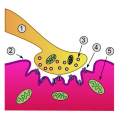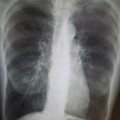Treatment for Allergic Rhinitis
When treating allergic rhinitis, you should take into account the severity of symptoms, patient’s age, whether they are pregnant or not, price, and other factors. For asthmatics, allergic rhinitis is especially important to be treated as it can lead to asthma exacerbation. And of course, one should try to avoid known allergens as well.
For Mild Intermittent Symptoms:
- Second Generation Non-Sedating Oral Antihistamine (Preferred)
- Loratadine (Claritin), Desloratadine (Clarinex), Fexofenadine (Allegra) – Cheap, non-sedating, and works fast (15-30 minutes) so great for PRN, but not as good for congestion or ocular symptoms. Cetirizine (Zyrtec) is second-generation as well, but it is sedating.
- First Generation Oral Antihistamine (Not as preferred)
- Brompheniramine (Bromphed), Chlorpheniramine (Chlorphen), Clemastine (Dayhist), Diphenhydramine (Benadryl) – Not as preferred because these are sedating, which can affect school performance, impair driving, and contribute to more work injuries. However, you could give it for patients who have trouble sleeping due to the symptoms.
- Intranasal Antihistamine (Not as preferred)
- Azelastine (Astelin), Olopatadine (Patanol) – better efficacy, better for congestion, faster acting, but more expensive and sedating. Because there are more effective choices out there for a fraction of the cost with less side effects (like Flonase), intranasal antihistamines typically are not prescribed as a first choice drug or prescribed alone.
For Persistent Symptoms:
- Intranasal Corticosteroid
- Mometasone (Nasonex) – low potency, safe in ages >2
- Triamcinolone Acetonide (Nasacort AQ) – OTC, moisture neutral, low potency
- Flunisolide (Nasarel)- moisturizing, medium potency
- Beclomethasone (Beclovent) – medium potency
- Fluticasone propionate (Flonase) – OTC, high potency
- Budesonide (Rhinocort AQ) – safe in pregnancy (Category B), moisture neutral, high potency
- Ciclesonide (Omnaris – aqueous, Zetonna – dry) – high potency, less irritating than other intranasal corticosteroids
Severe Symptoms
- Intranasal Corticosteroid PLUS Oral or Intranasal Antihistamine or any of the following:
- Ipratropium (Atrovent) – used for severe rhinorrhea
- Montelukast (Singulair) – as effective as oral antihistamines. Can be useful for those with asthma since it reduces bronchospasm.
- Intranasal Cromolyn – the option is there, but it is weaker than antihistamines.
- Decongestants (Not preferred) – Phenylephrine, Oxymetazoline (Afrin), Pseudoephedrine – Not preferred because these meds have abuse potential, can cause rhinitis medicamentosa, rebound congestion. Can cause headache, elevated BP, tachycardia, intraocular pressure. Only use as last resort, and for no more than 3 days max.
- Azelastine/Fluticasone Combo (Dymista) – Very effective and fast-acting. Superior to either treatment alone.
- Referral to allergist – for subcutaneous or sublingual immunotherapy.
Natural Ways
- Avoid exposure to allergens – Avoid pets, cigarette smoke, pollen, etc. that are known to trigger symptoms.
- Nasal saline irrigation – Neti Pot
- Botanicals: Butterbur root, Khella seed (from which Cromolyn was derived), Stinging Nettle root, Quercetin











